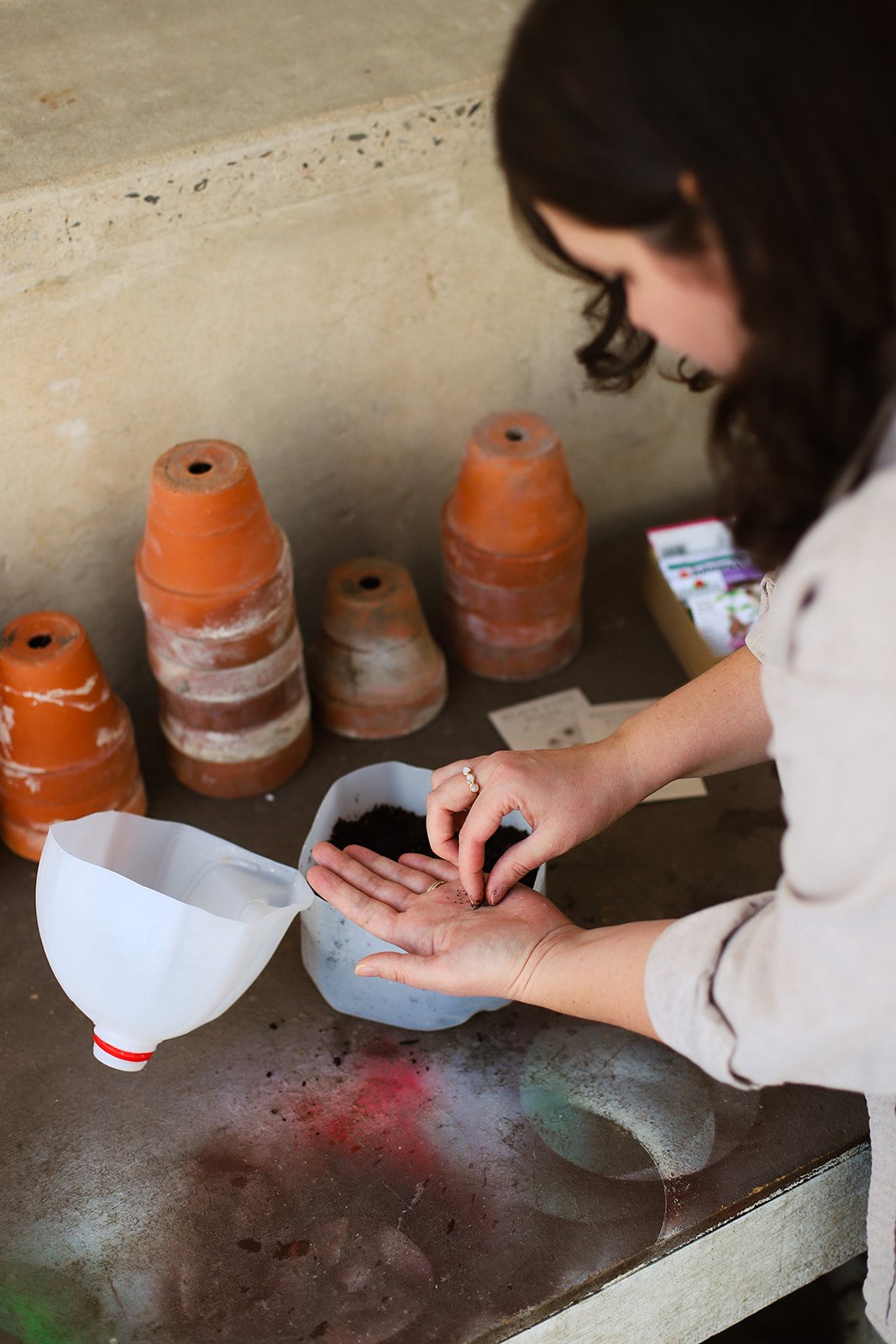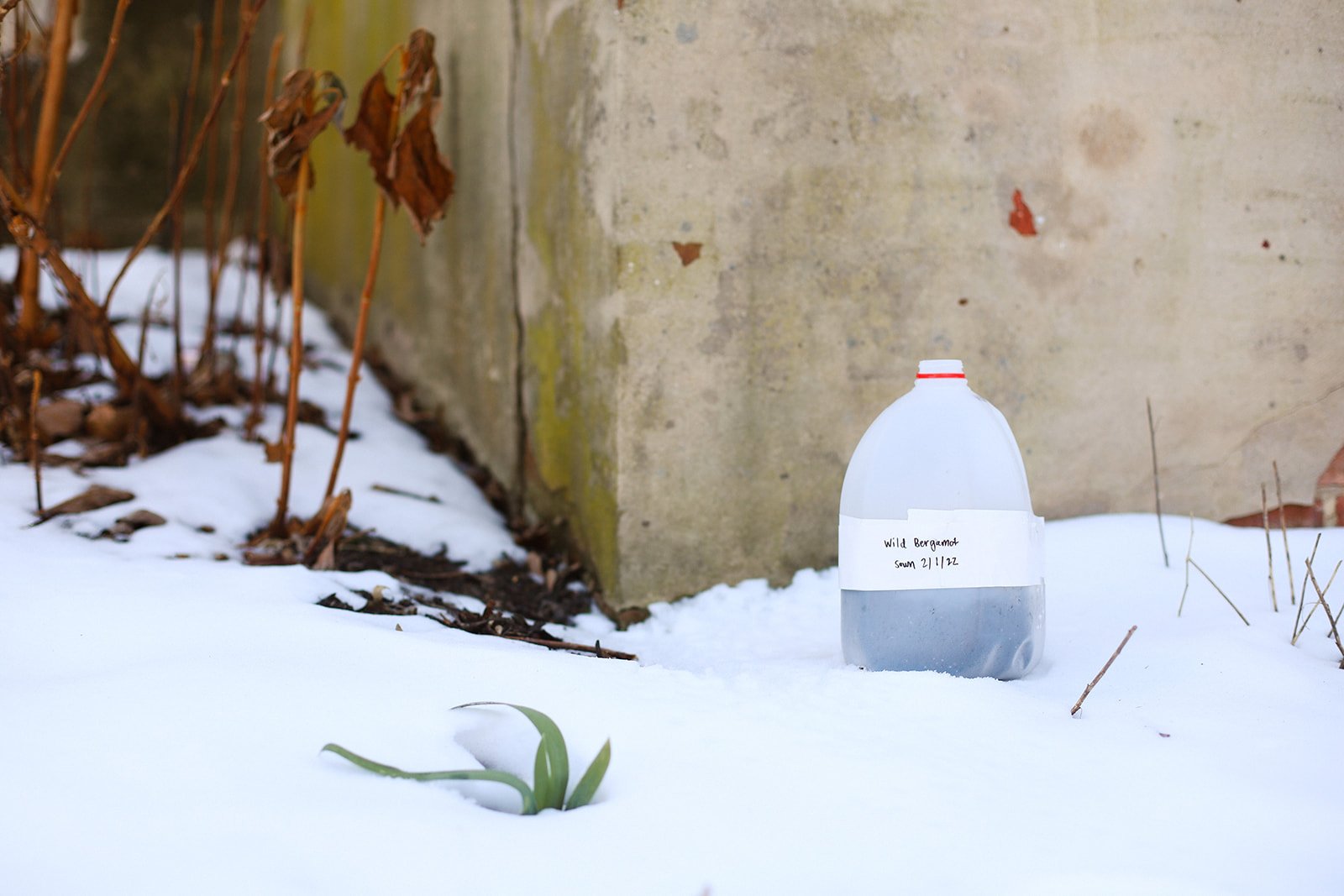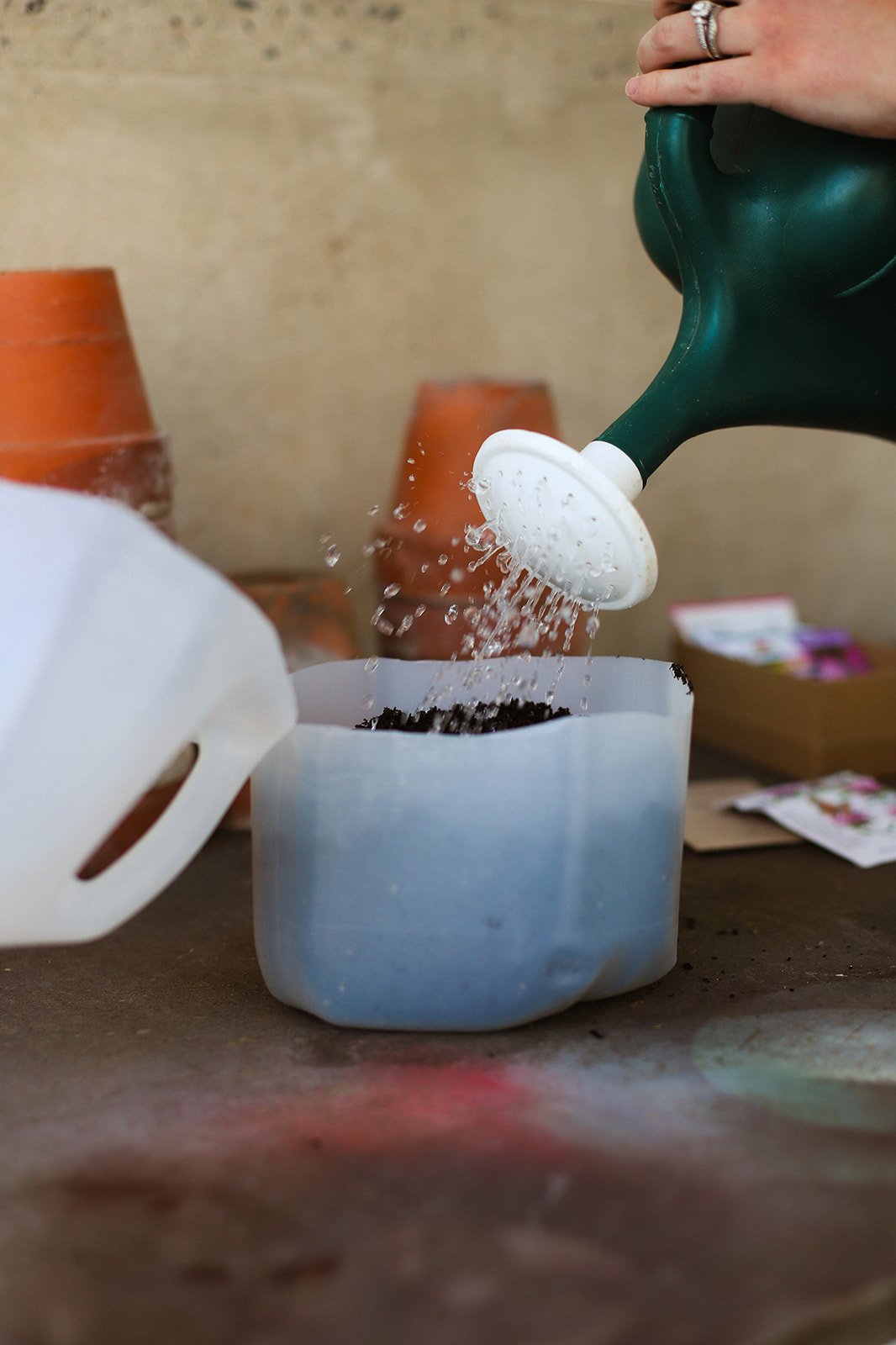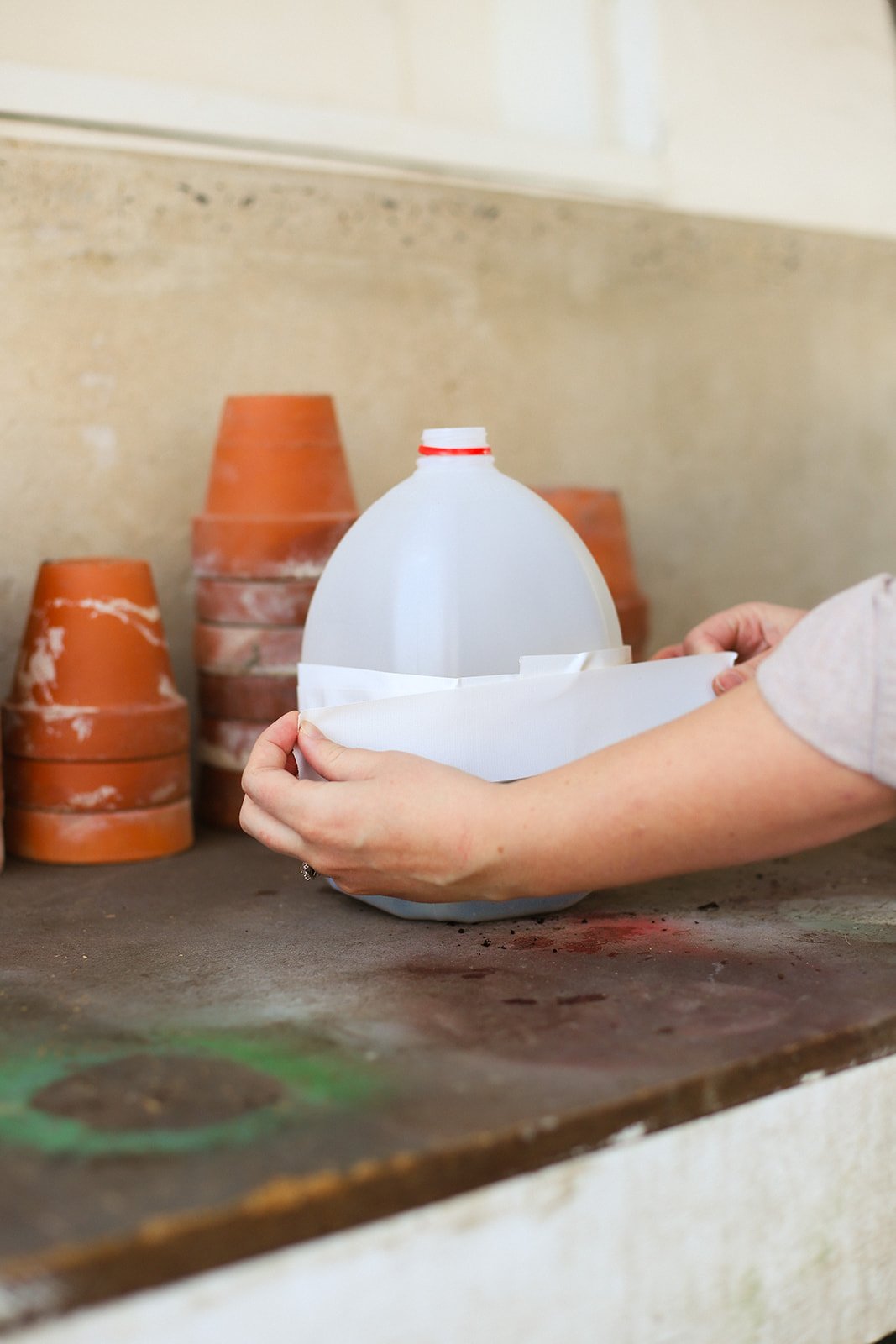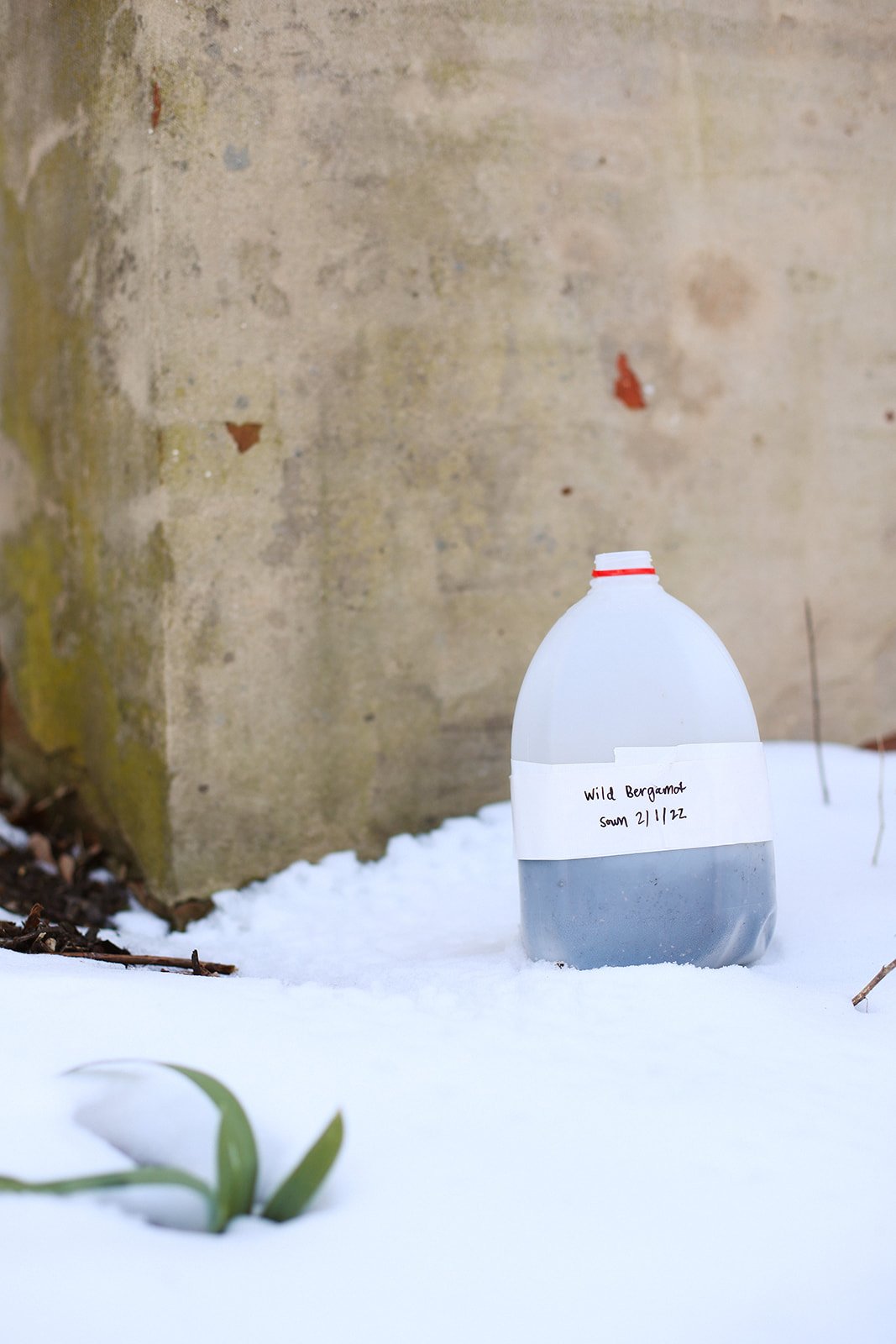Winter Sowing in Milk Jugs
By this time of year, most gardeners are ordering new seeds and getting the itch to sow them. While it’s still a bit too early to start seeds indoors, there is a way to get a jumpstart on your gardening year now! I recently learned about winter sowing in plastic milk jugs. The milk jug acts as a miniature greenhouse, providing a protected place in which your seeds can germinate and grow outdoors from mid-late winter until spring. It’s a simple, inexpensive and low maintenance seed starting method that is said to produce stronger, more resilient seedlings that don’t require hardening off. What’s not to love about that?
How winter sowing in milk jugs works
In nature, seeds are dropped in the fall, lay dormant over the winter and then slowly “wake up” as spring approaches. Sowing seeds in a milk jug greenhouse mimics these conditions and also adds some distinct benefits. Using this method, your seeds can germinate and start growing weeks before any direct sowing can be done. The milk jug greenhouse provides a layer of protection against the harshest of winter temperatures and against any foraging animals. As long as you live in an area that gets regular precipitation, the snow and rain that falls through the open lid will do the job of watering for you.
Which seeds are best for winter sowing
The best varieties for this method of sowing are native perennials, hardy annuals and cool season vegetables. Some keywords on your seed packet that may indicate an ideal candidate for winter sowing include cold-tolerant, hardy, or “requires cold stratification”. A seed variety with instructions to sow indoors 8+ weeks before the last frost might also be a good fit. You want to stay away from tender annuals that require warm temperatures to germinate and quick growing varieties that are really best direct sown. Like everything with gardening, it’s best to approach this as an experiment! There’s no harm in trying.
Here are a few examples of seeds that are good winter sowing candidates for me, here in USDA zone 7a:
Echinacea/coneflowers
Rudbeckia/black eyed Susan
Lavender
Milkweed
Poppies
Foxgloves
Scabiosa/pincushion Flower
Larkspur
Sweet peas
Cabbage
Artichoke
Brüssel sprouts
Broccoli
Cauliflower
Chard
Spinach
Lettuce
Parsley
When to start seeds using this method
Winter sowing can be done anytime after the Winter Solstice on December 21st. From that point on, the days are progressively getting longer and your seedlings should fare well. However, since late December is usually such a busy time of year, I find this to be the perfect project for January & February. You can even use this method for starting more varieties outdoors through March and April.
Supplies you’ll need
Milk jug
Utility knife
Potting mix
Watering can
Spray bottle of water
Seeds
Duct tape
Marker
Instructions
Step 1:
To prep your milk jug, first cut 4 holes in the bottom for drainage. Then make a cut around the bottom third of the milk jug, leaving about 2” inches around the handle to create a hinge for your lid. You can remove and dispose of the cap.
Step 2:
Scoop in your potting mix into the bottom of your milk jug to a depth of 3-4”. Pre-moisten your soil by pouring in a little water then giving it a good stir. You don’t need very much water, just enough to help the soil hold it’s shape.
Step 3:
Sow your seeds following the directions on the packet for planting depth. I used 5 planting sites per milk jug - one in each corner and one in the middle - and planted two seeds in each site. This keeps me covered in case one seed doesn’t germinate, but I do plan to check on these in early spring and thin out extra seedlings if needed.
Step 4:
Use a spray bottle to water your seedlings in, making sure the top 1” or so of the soil is well moistened.
Step 5:
Shut the lid and seal it closed with duct tape. Use a garden marker to write the variety you planted and the sowing date on the tape.
Step 6:
Place in a protected area outside. The ideal spot is somewhere it will receive plenty of sunlight but won’t be subject to high winds & blow over.
Step 7:
Set a reminder to check your seedlings monthly until spring. Supplement with water, if needed, by inserting the nozzle of your spray bottle through the open spout of the jug.
Step 8:
Open in after the last frost date in your zone (early May here in zone 7) & plant into your flower bed or container of choice!
Update:
I am happy to report that this technique worked wonderfully for me! Out of nine milk jugs sown between late January and late March, seven are full of strong, healthy seedlings! Here’s a peek at how they were looking in mid April, when we shot the spring ‘22 issue of my Midseason Journal.
This is the wild bergamot I sowed back on February 1st:

